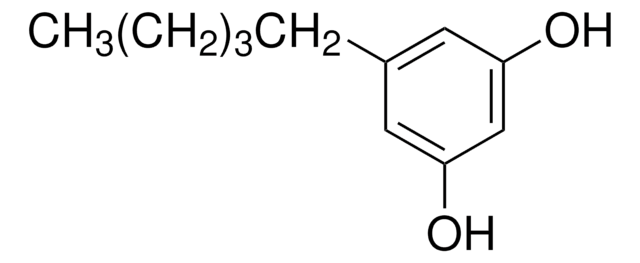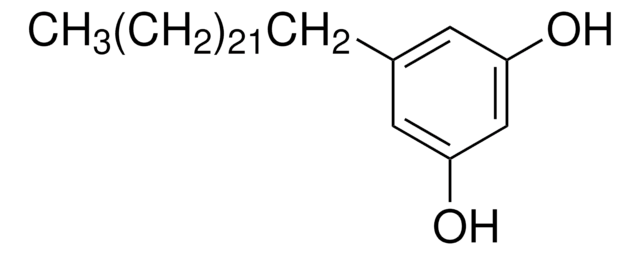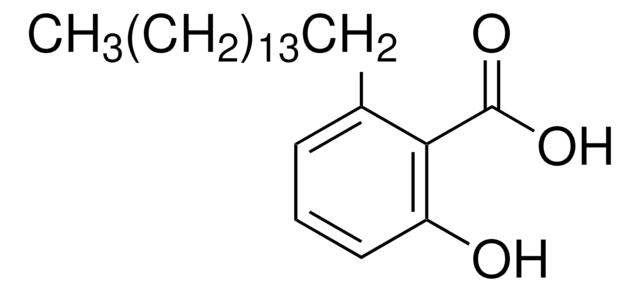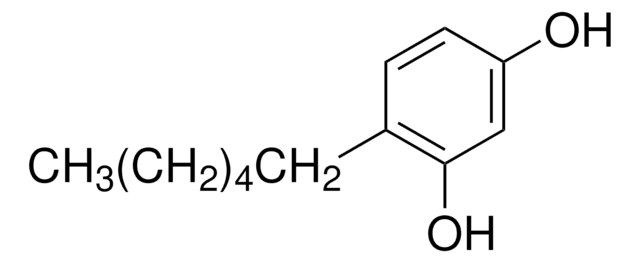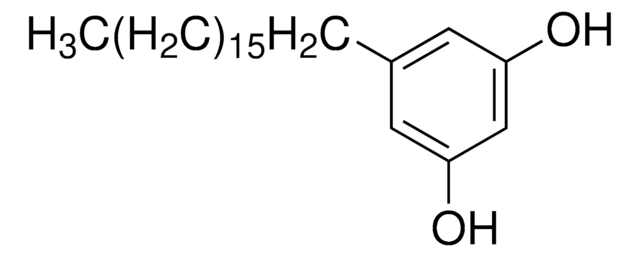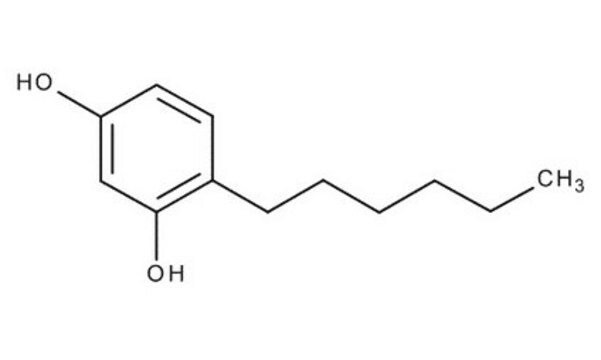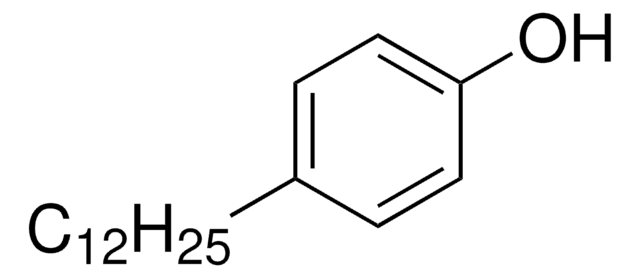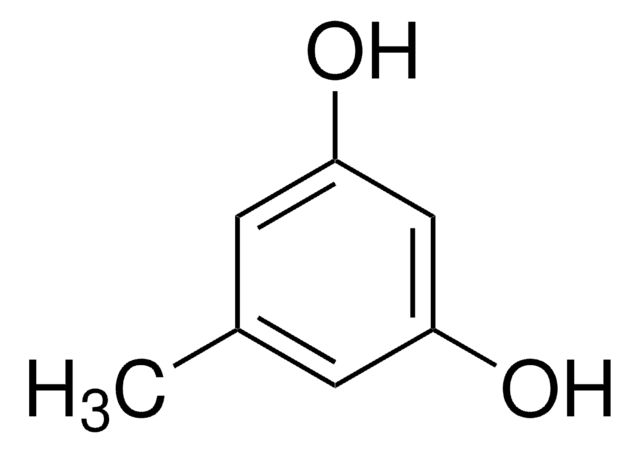91822
5-Pentadecylresorcinol
analytical standard
Sinónimos:
1,3-Dihydroxy-5-pentadecylbenzene, 5-Pentadecyl-1,3-benzenediol
About This Item
Productos recomendados
grado
analytical standard
Nivel de calidad
Análisis
≥95.0% (HPLC)
caducidad
limited shelf life, expiry date on the label
técnicas
HPLC: suitable
gas chromatography (GC): suitable
aplicaciones
cleaning products
cosmetics
food and beverages
personal care
formato
neat
temp. de almacenamiento
2-8°C
cadena SMILES
CCCCCCCCCCCCCCCc1cc(O)cc(O)c1
InChI
1S/C21H36O2/c1-2-3-4-5-6-7-8-9-10-11-12-13-14-15-19-16-20(22)18-21(23)17-19/h16-18,22-23H,2-15H2,1H3
Clave InChI
KVVSCMOUFCNCGX-UHFFFAOYSA-N
Descripción general
Aplicación
- Goji berries using ultra-high-pressure liquid chromatography coupled with quadrupole-time-of-flight mass spectrometry (UHPLC-ESI-QTOF-MS).
- Mango (Mangifera indica L.) peels using high-performance liquid chromatography/atmospheric pressure chemical ionization mass spectrometry (HPLC/APCI-MS).
Envase
Productos recomendados
Palabra de señalización
Warning
Frases de peligro
Consejos de prudencia
Clasificaciones de peligro
Eye Irrit. 2
Código de clase de almacenamiento
11 - Combustible Solids
Clase de riesgo para el agua (WGK)
WGK 3
Punto de inflamabilidad (°F)
Not applicable
Punto de inflamabilidad (°C)
Not applicable
Elija entre una de las versiones más recientes:
¿Ya tiene este producto?
Encuentre la documentación para los productos que ha comprado recientemente en la Biblioteca de documentos.
Los clientes también vieron
Nuestro equipo de científicos tiene experiencia en todas las áreas de investigación: Ciencias de la vida, Ciencia de los materiales, Síntesis química, Cromatografía, Analítica y muchas otras.
Póngase en contacto con el Servicio técnico